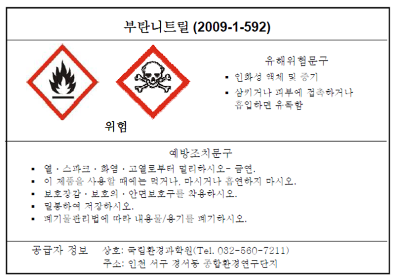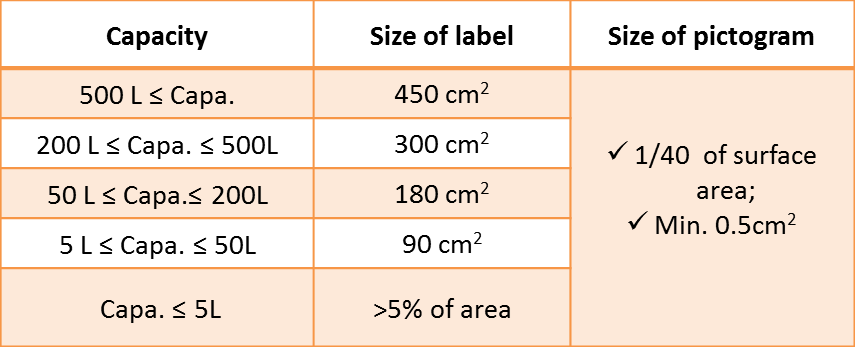GHS Implementation in Korea
Little Pro on 2015-12-31
Korea has fully implemented GHS for both substances and mixtures since 1 July 2013. Suppliers of hazardous chemicals should classify their chemicals according to GHS classification criteria, prepare safety data sheets(SDS) and label the containers or packages of hazardous chemicals according to relevant national standards.
There are three main ministries involved in GHS enforcement. Attached table summarizes the main laws, authorities, and deadlines for GHS implementation in Korea.
| Law | Authority, Grace Period and Requirement |
|---|---|
| Chemical Control Act (Article 16)) |
|
| Occupational Health and Safety Act (Article 41) |
|
| Hazardous Materials Act |
|
Critical Dates of GHS Implementation in Korea
| Substance |
|
| Mixture |
|
Classification, Labelling and SDS Standard in Korea
The most important and also the latest GHS standard in Korea is MoEL's Public Notice No. 2016-19 - The Standard for Classification Labeling of Chemical Substance and Material Safety Data Sheet. It stipulates chemical classification criteria, the content of SDSs/labelling, and phrases for various hazard and precautionary statements in Korean. The standard is based on UN GHS Rev. 4.
Labelling Requirements
Both MoE and MoEL have set labelling requirements for hazardous chemicals. In general, MoEL's standard applies.
- Product identifier: consistent with SDSs;
- Signal word: warning or danger;
- Pictograms: Up to 4 pictograms if there are 5 or more pictograms(not mandatory);
- Hazard statements: repeated statements can be omitted; similar statements can be combined;
- Precautionary statements: Up to 6 p-statements if there are 7 or more p-statements(not mandatory); A sentence pointing to SDS for full statements shall be added;
- Supplier Info: The contact info of Korean legal entity needs to be given;
- Languages: Korean. However, SDSs and labels for chemicals for lab use & research do not need to be prepared in Korean. Product name, substance name and foreign supplier's contact info can be written in English.
- Small package(<=100ml): Hazard and precautionary statements can be omitted.
The picture below is an example of Korean GHS label.

The standard has also set the minimum size requirement of a label and pictogram for different sizes of containers.

For toxic chemicals, MoE's additional requirements apply:
- Classification: mandatory to use C&L published by NIER.
- Product identifier: For mixture, product name and the content of toxic chemical shall be disclosed;
- Pictogram: display all available pictograms published by NIER
To access Korean compulsory GHS classification list for toxic chemicals, please click here. If you would like to download GHS classification list in other countries, please click here.
SDS Requirements
Korea has also adopted standard 16-section SDSs.There are a few things you need to be aware of when you prepare Korean SDSs.
- Confidential business information (CBI): Substance name, CAS or content can be hidden. Hazards must be fully disclosed.
- Indicating concentration ranges: within 5%. If the contents are less than 5%, the lower limit shall be indicated as ">=1% "(0.1% for carcinogens and germ cell mutagens, 0.2% for respiratory sensitizers, and 0.3% for reproductive toxicants);
Korean Occupational Health and Safety Agency(OSHA) have prepared many standard Korean GHS SDSs for pure substances and they are available here.
References & Resources
Click here to obtain all chemical regulatory references and resources for Korea.
Recommended Reading
Having Questions?
We do not provide consultancy services. If you have questions or need any help, please contact our sponsor. You may also find an expert in CSP business directory below. If you are a consultant, you may get yourself listed in CSP business directory (free) or sponsor this page to leave your contact info on this page..

Tags: Topics - Korea, GHS Implementation